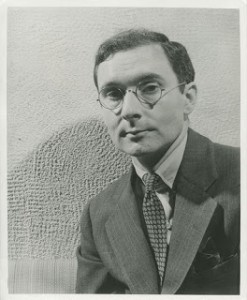On Boston’s role in the instigation of a new thinking about contemporary art, is an intriguing post by Christopher Shea for the Boston Globe. Here is an extract:
New York’s dominance in producing art can’t be denied—there was no Boston Jackson Pollock, and there were significant delays before modern art hit Boston gallery walls. But Boston can lay claim to a different kind of influence, a new book argues: Some of the thinking that would shape the way that Americans appreciate modern art, helped launch it as a major public spectacle, and shifted our understanding of what could be considered “art” to begin with first took form in a classroom right in suburban Massachusetts.
It occurred thanks to that young Wellesley instructor, who in the 1926-27 academic year began teaching an extraordinary seminar to the daughters of New England’s wealthy families at Wellesley College. Barr was still just a graduate student at Harvard at the time, but the inventive thinking about art that he championed in his course—with an emphasis on bridging the gaps between high and low culture—would shortly explode in influence when he was hired by the new Museum of Modern Art in New York. And his class, small as it was, launched a generation of his students into prominent roles in the art world, helping to spread the gospel of contemporary art as curators, journalists, and critics.
…
“Dazzling in its multidisciplinarity,” Meyer writes, Barr’s course comes across as one of the greatest art history courses ever taught—“a laboratory for the study of a culture very much in the making.” Barr called the 11 students in his course “faculty,” as if they were peers, and he sent them out to research subjects like jazz, or the history of film, to report back to the class. He had musicians play Stravinsky and Schoenberg for his students. Field trips were key. He took students to see the Necco factory in Cambridge, a form-follows-function structure he considered among “the most living and beautiful buildings in New England.” He took them to the National Automobile Show.
…
Great art offers “an invitation to slow down, to think more deeply about things,” says Meyer. So can studying key moments in the fast-changing history of contemporary art. What made Barr important, Meyer suggests, is that he never lost sight of the deep continuity of art, even as he gazed into a disorienting future.
For the full post, visit b.globe.com/13LXobD.

